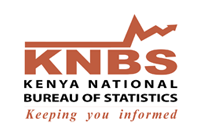Census information helps determine locations for schools, roads, hospitals, and more. Businesses use census data to locate supermarkets, shopping centers, new housing and other facilities. The census data can determine election boundaries and therefore how individuals will be represented in parliament
The census is organized by the Kenya National Bureau of Statistics mandated through, headed by an act of parliament, The Statistics Act 2006. The Bureau is headed by a Director General, and the census undertaking is overseen by professional demographers/statisticians in collaboration with other government agencies, non-governmental agencies, private sector among other stakeholders. The census is held every 10 years and 2009 marked the 5th census in post independence Kenya.
The census provides a statistical snapshot of our country and its people. A vast majority of all countries regularly carry out a census to collect important information about the social and economic situation of the people living in its various regions.
The census is more than a population count: it provides all levels of government, business, industry, media, academia and independent organizations with social, economic and demographic information that is essential for making decisions regarding the many services each provides to the public
The 2009 Census employed new technology for better accuracy and faster processing of the data. These technologies included the use of special software to automatically read the hand-printed responses on the census form and mapping technology. The Bureau adhered to international guidelines which advocate for the values of professionalism, transparency, accountability and integrity required of statistical systems in maintaining credibility and public confidence.
The census information was collected through instruments known as questionnaires. The questionnaires were filled by well trained census officials known as Enumerators. The questionnaire consistsed of a set of questions meant to solicit information about the household (The census unit of observation or enumeration). There were sets of manual (Guidelines) on how to ask the questions and fill the questionnaires as well as edit procedures in order to ensure high quality of data
There were questions about the household as a whole and about each person who had spent the census night in the household. The question covered the demographic characteristics of each person such as sex, age, marital status, place of birth etc. Additionally there were also questions about disability, use of ICT, basic information about household amenities, assets, livestock and recent births and deaths in the household. Visitors who spent the census night in the household were enumerated in that household. A question on ethnic background of all respondents was included.
The questions in the questionnaire were answered by the household head or any responsible member of the household who could provide most if not all the required information about the household members at the time of the interview.
Ethnic origin data paint a picture of Kenya’s cultural diversity and provide insight into the changing in-migration patterns and increasing diversity. Governments, community groups, ethnic and cultural organizations, school boards, hospitals, and researchers use ethnicity data to assess the socio-economic characteristics of people of differing backgrounds. For example, in Canada, the department of heritage uses information on ethnic origin to administer programs under the Multiculturalism Act.
All previous censuses conducted in Kenya have collected data on ethnicity, reflecting a long-standing and continuing widespread demand for information about ethno-cultural characteristics of the Kenyan population.
Yes. The census is strictly confidential. All information collected is strictly for use by census officials. The Bureau guarantees the protection of personal details collected in the census.
Everyone working with personal census details must sign or take an oath of secrecy that they will protect the privacy/confidentiality of information. The Statistics Act 2006 also provides Protection legislation and census confidentiality legislation that allows anyone who discloses personal census details to be prosecuted
The district census committees were in charge of security in respective districts.The measures taken included involvement of local administration and recruitment of enumeration personnel from the areas they were working in. Each security team was expected to take measures according to the unique security concerns of their regions.
The media is trusted in the communities.The media helped deliver the 2009 census message to every corner of the nation, including areas isolated by language or geography. For example, the media shared news about census job recruitment efforts, covered census events, and included census information in broadcasts, articles and on news Web sites.
The government of Kenya funded close to 90% of the census exercise, which icost about Kshs. 7.4 billion. The rest was sourced from development partners.
